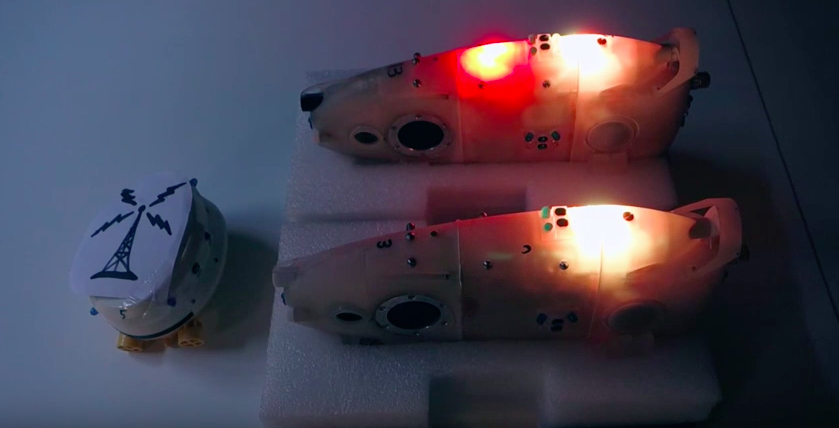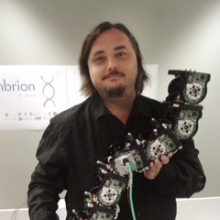
Robohub.org
The Year of CoCoRo Video #43/52: Channel switching

The EU-funded Collective Cognitive Robotics (CoCoRo) project has built a swarm of 41 autonomous underwater vehicles (AVs) that show collective cognition. Throughout 2015 – The Year of CoCoRo – we’ll be uploading a new weekly video detailing the latest stage in its development. This week’s video shows an on-table experiment in which two Jeff robots dynamically choose between blue-light and radio-frequency communication,
Last week we showed that our robots can also communicate in murky waters when blue light communication is blocked. We showed radio-frequency, electric potential fields and magnetism, although those channels can also be disturbed or blocked, as natural magnetic fields, electrical charges and WiFi are easily disturbed. This means that it is crucial for the swarm to dynamically choose the appropriate communication channel.
Of course, one can always just send and receive using all channels, but this might jam them and waste energy (battery time). So a dynamic choice of just one channel is preferable and our CoCoRo robots are capable of this.
tags: AUV, c-Research-Innovation, CoCoRo, EU robotics industry news, UAV, underwater video




